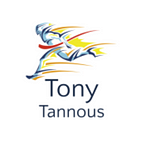Guide to using Guitar Pro with VST Instruments by Interfacing with a DAW
This article primarily focuses on establishing connectivity between Guitar Pro and a Digital Audio Workstation (DAW) by using a virtual MIDI loop device as a conduit for transferring MIDI data between the two programs. Playback of a MIDI score from within Guitar Pro can then be “streamed” via the loop device to the DAW, which opens up the ability to apply VSTs to produce more realistic tracks.
Install Virtual Midi Cable/Port
Steaming MIDI data from Guitar Pro to our DAW in realtime can be accomplished via a virtual loopback cable/port. Third party software loopMIDI, developed by Tobias Erichsen provides this capability.
Download and install the latest version of loopMIDI. A system reboot after installation is recommended.
loopMIDI should automatically launch at startup. By default, a virtual port is automatically created with name loopMIDI Port.
We’re now ready to prepare Guitar Pro to send MIDI through the port.
Preparing Guitar Pro to Send Track MIDI
Configure Midi Output
To set MIDI output destination from Guitar Pro to the virtual port:
- Select File > Preferences
- Under MIDI OUTPUT, choose loopMIDI Port 1
Convert Guitar Pro Score/Tab Tracks to MIDI
Tracks within .gp* files/scores which are configured to use Guitar Pro's Realistic Sound Engine (RSE) will need to be switched to MIDI.
- Open Guitar Pro tab file
- Sample score consisting of 4 tracks (as shown below) will be used as an example (this was sourced by using web search)
- Choose Sound > Switch All Tracks to MIDI
- Save the the updated score
Determine each Track’s MIDI Channel Assignment
The next step is to determine MIDI channel used by respective tracks.
- Enable Inspector to view track info — View > Show Inspector
- The image below shows Lead Guitar selected from the Tracks list, with track details displayed to the right:
Note: Guitar Pro assigns 2 separate MIDI channels by default to each track, but for the sample score, only one these (the first) is used, so channels 5 and 6 are assigned to the Lead Guitar, however, channel 5 contains the actual MIDI data
- For each track, note down the channel used
- Lead Guitar, is assigned to channel 5
2. Rhythm is assigned to channel 9
3. Bass track is assigned to channel 1
4. Drums (percussion) by default, are always assigned to channel 10
In summary:
- Guitar Pro will send MIDI to our virtual loopMIDI port
- Tracks send MIDI to the port’s output via the following channels:
— Lead Guitar: channel 5
— Rhythm: channel 9
— Bass: channel 1
— Drums: channel 10
Now we can start preparing our DAW to receive the MIDI data.
DAW Configuration
The next step is configuring our DAW to receive MIDI. Procedure will vary depending on the DAW being used.
Ableton Live Lite is used to walk through a sample set up.
DAW Audio Output and MIDI Inputs
From Ableton, ensure:
- Audio Device — is set to reflect the correct device/driver
- MIDI Ports — input is enabled for LoopMIDI Port
Create MIDI Tracks
Using the sample score mentioned earlier as an example, a new project is created with the corresponding MIDI tracks.
- Set each track to receive input from our loopMIDI Port on the corresponding MIDI channels we noted earlier,
i.e.
Lead Guitar: channel 5
Rhythm: channel 9
Bass: channel 1
Drums: channel 10 - Arm all tracks
Using VSTs with a Track
The screenshot below shows the track for Drums (Channel 10) configured to use VST, MT PowerDrumkit.
Switching to Guitar Pro, start playback of the score. Our DAW should receive the “stream” of MIDI data from Guitar Pro (in this case, MIDI data from channel 10 for Drums) to the VST.
Closing Remarks
I use the set up for basic home recording and for spicing up Guitar Pro assisted practice sessions by experimenting with the wide range of available VSTs/Soundfonts to allow for a more “real band” experience.
If you’re looking for Open Source alternatives to Guitar Pro, checkout TuxGuitar and MuseScore. What’s interesting to note is that the latter of these aims to extend capability by offering VST support for VSTs in its future roadmap (version 4).
